Top dressing of grapes - root and foliar
10.06.2016
22 163
Top dressing of grapes - root and foliar
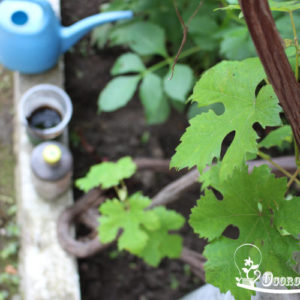
Proper and timely feeding of grapes can increase yields by several times, make plants stronger, more resistant to many diseases and unpredictable weather conditions. Large tasty berries, indeed, can be grown on your own plot. The owner of the vineyard will need to take care and allocate some of their own time for the implementation of activities.
What nutrients do vines need?
A well-known fact is that the vineyard gives a generous harvest on good fertile and fertilized lands. Over time, the nutrient content is constantly decreasing and it becomes necessary to apply additional fertilizers. Without fertilization, the soil is depleted, and the vine develops poorly - yields decrease, resistance to frost and drought falls. 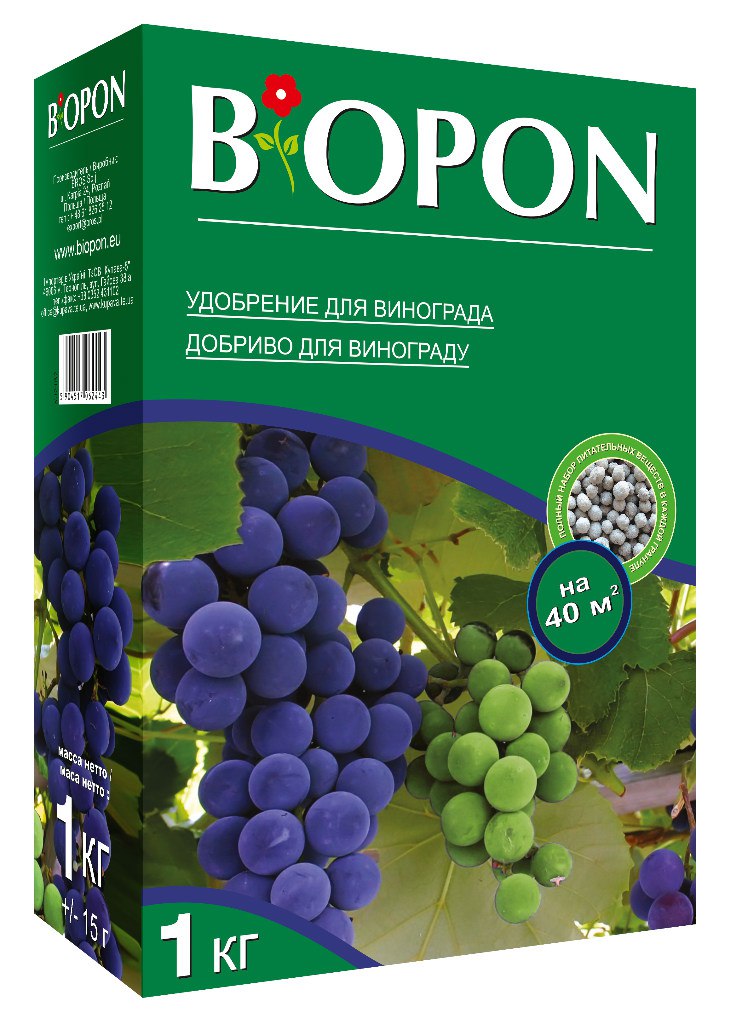
Many novice gardeners mistakenly think that complex mineral fertilizers applied a couple of times per season are enough. The need of grapes for various elements is modified depending on the stage of development. You can succeed if you figure out what substances are required for grapes. It is also necessary to know what effect they have on certain processes. It is imperative to feed the vine with the following fertilizers:
nitrogen- is an indispensable element in the growth of green mass (shoots, leaves). It is applied mainly in early spring, at the initial stages of growth. In summer, the need for nitrogen-containing fertilizers decreases, and in August it is generally not recommended to apply it. In simple words, the rapid growth of greenery shifts the timing of the ripening of wood, therefore, an unripened vine may die in winter. , ammonium nitrate, ammonium sulfate - the most famous and common nitrogen fertilizers for grapes;
phosphorus- is necessary for the proper organization of the metabolic process in plants. An important role is played by a sufficient amount of phosphorus at the time of the appearance of inflorescences and the formation of berries;
potassium- provides transportation of nutrient compounds within the grapes. A large accumulation is observed in the vine, shoots, leaves. Sufficient supply of potassium to the plant increases the accumulation of cell sap, reduces the evaporation of liquid, which is especially important on dry days. The element is needed when preparing plants for winter;
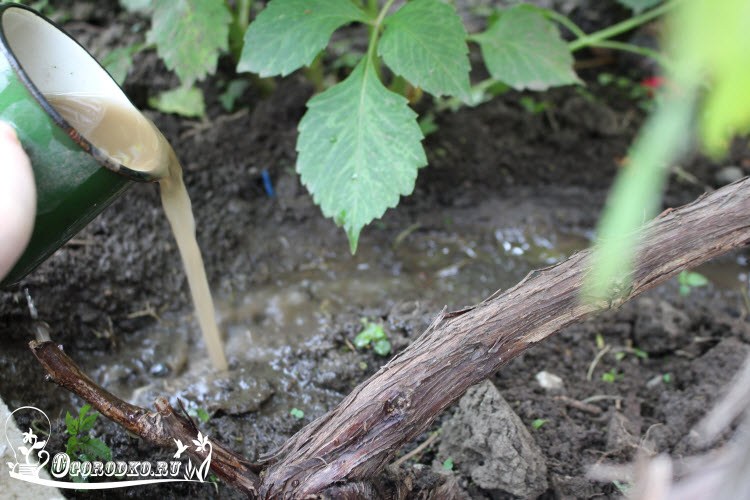 in the photo - grape fertilizer
in the photo - grape fertilizer
zinc- belongs to the category of trace elements, which cannot be underestimated. The lack of a substance causes a violation of the fertilization of inflorescences, paralysis of the crests of clusters, oxidative processes increase, and the growth balance is disorganized;
boron- responsible for the movement of sugars and carbohydrate compounds. Its deficiency leads to poor fertilization. The element does not move freely throughout the plant, the lack can be seen at the growth points (withering away of the main shoots, a large number of side branches, shortening of the internodes);
copper- provides metabolism in the plant, as a rule, the element is contained in the soil in sufficient quantities. The lack is easily replenished with spraying with Bordeaux liquid.
Stages of top dressing
The first fertilization is carried out in early spring, before bud break. Take 40-50 grams of ammonium nitrate, the same amount of superphosphate, 30 g of potassium salt per adult bush, dilute in a bucket of water and feed the plant. For a good and correct distribution of the solution with access to the roots, it is necessary to dig a hole (trench) 40-50 centimeters deep at a distance of at least half a meter. Fertilizers are poured there, then the hole is covered with soil.
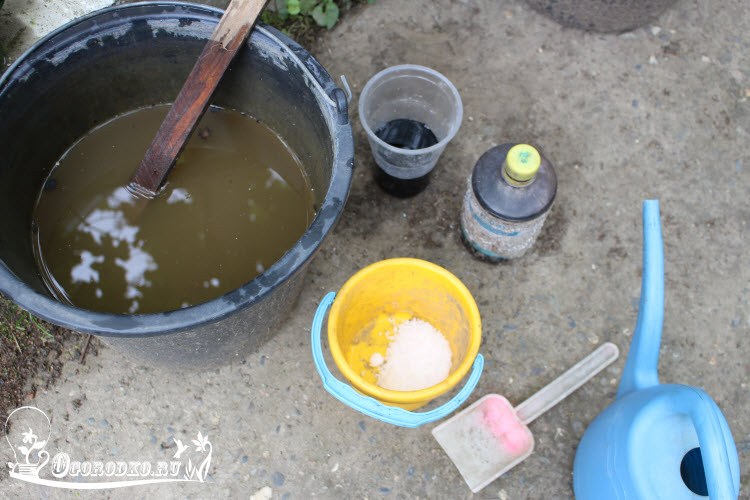 in the photo - fertilizers for grapes
in the photo - fertilizers for grapes  in the photo - preparing fertilizer for feeding grapes
in the photo - preparing fertilizer for feeding grapes
In addition to mineral complexes in the spring, root feeding of the vine, chicken droppings or manure can be carried out. It is not difficult to dilute chicken manure, it is necessary to pour the product into any container, let it ferment for 10-15 days, then you can use it after diluting it with water in a ratio of 1:20. Manure can be used already rotted, when embedded in the ground, and diluted in a liquid state (prepared similarly to chicken manure solution).
In the second half of May, when the soil has already warmed up enough, the temperature regime on the street does not fall below + 8ºС, an intensified period of formation of vegetative organs begins, the first rudiments of future clusters appear. The vine is preparing for the upcoming flowering - which means it's time to feed the plant. The timing of fertilizing grapes may shift, depending on the growing area and varietal characteristics, therefore, the breeder independently determines the specific time for the introduction of fertilizers.
You can feed the bushes in May, June before flowering for two weeks, using superphosphate and nitrogen fertilizers together with potassium salt in the proportion of 50/40/35g. Top dressing of flowering grapes is not carried out. 3-4 days after the second application of minerals, foliar top dressing of grapes is carried out before flowering on the leaf, to improve the pollination process using such preparations as Humisol, Boric acid, Zinc sulfate, Potassium chloride, Humat, Reakom-R-Grapes. They help increase yields, resistance to diseases, drought, and enhance the formation of clusters.
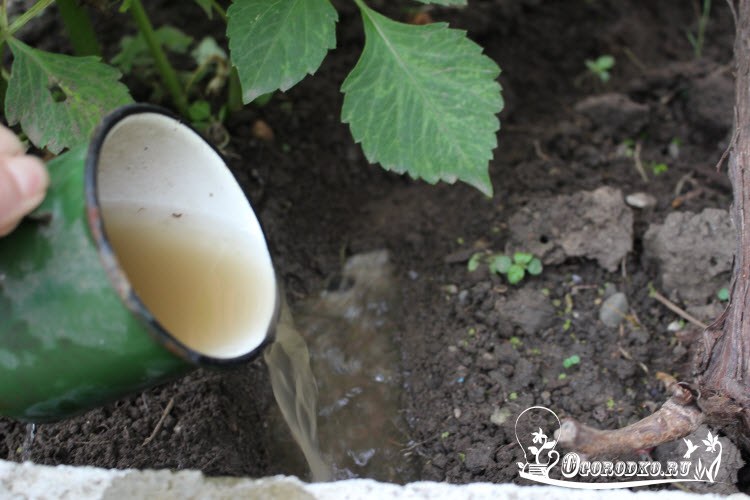 in the photo - root top dressing of grapes
in the photo - root top dressing of grapes
The third top dressing of grapes is carried out after flowering, when berries are formed. Only phosphorus-potassium fertilizers are used, excluding nitrogen fertilizers. For watering one bush, dilute 40-50 grams of phosphorus and potash fertilizer per 15 liters of water. At this time, it is recommended to carry out foliar feeding with microelements (boron, manganese, cobalt, zinc and others). Take 1 tbsp on a bucket of water. potassium humate, 1 teaspoon of Novosil, half a tsp. iodine, manganese on the tip of a knife, 60-70 grams of baking soda, ½ tablespoon of boric acid, 15-20 g of Kemira-Lux and spray with the resulting solution. In addition to trace elements, it is recommended to additionally apply fungicides against pests and diseases (Ridomil Gold, Thiovit Jet).
The main stages of top dressing are outlined above, but this does not mean that no more fertilizers need to be applied. Depending on the condition of the plantations, increase or decrease the number of top dressings, their number. Additionally, the grapes can be fed after harvest. Do not forget, it is desirable to combine fertilization with watering the grapes.




